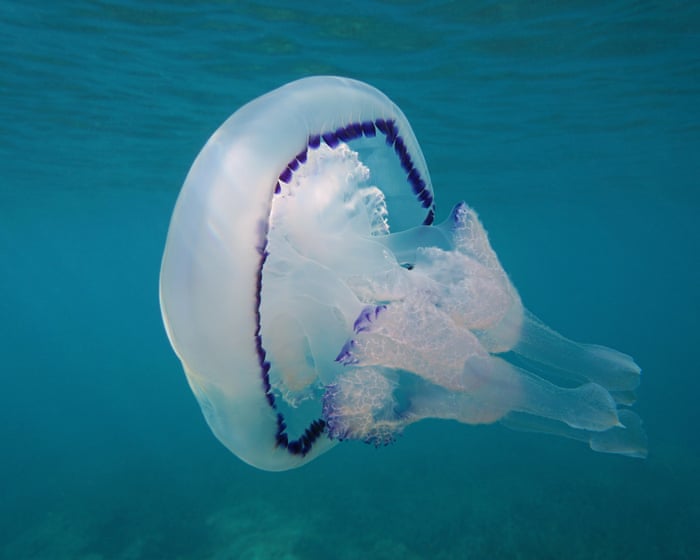This summer, UK waters have seen an unusually large number of jellyfish, according to experts. These jellyfish blooms arrive annually for their breeding season, carried by warm ocean currents toward the coast. Rising sea temperatures, worsened by global warming, create ideal conditions for jellyfish, leading to bigger populations and longer stays during summer. Experts warn this could also attract new jellyfish species that thrive in warmer waters.
With record-high sea temperatures in April and May this year, the Met Office predicts even more jellyfish blooms along the UK coast. Jellyfish play a key role in marine ecosystems as plankton, forming the base of many food chains. The compass jellyfish, recognizable by its striped bell and long, stinging tentacles, is a favorite meal for turtles, says Abigail McQuatters-Gollop, a marine conservation expert at the University of Plymouth.
One of the most striking arrivals this year is the barrel jellyfish, which can grow up to a metre wide. With its thick, frilly-armed bell, this species has a mild sting and is even eaten in parts of Asia. Other jellyfish spotted in UK waters include moon, lion’s mane, blue, and mauve stingers.
The Marine Conservation Society recorded 1,432 jellyfish sightings in 2024—a 32% increase from last year. McQuatters-Gollop notes that climate change and warming waters may lead to more frequent jellyfish blooms. However, their stay is short-lived—some live and die within a single summer.
After summer, some jellyfish drift back out to sea, while others die off in UK waters when they exhaust their food supply, get caught in storms, or simply age after reproducing. Made up of 90% water, jellyfish are fragile and easily broken apart by strong currents. McQuatters-Gollop points out that extreme weather, another effect of climate change, can also damage their delicate bodies.
She describes jellyfish as “beautiful, with long, flowing tentacles—they look like creatures from outer space.” She encourages people to safely observe and appreciate them, saying, “They’re amazing, and I feel lucky every time I swim alongside them.”




